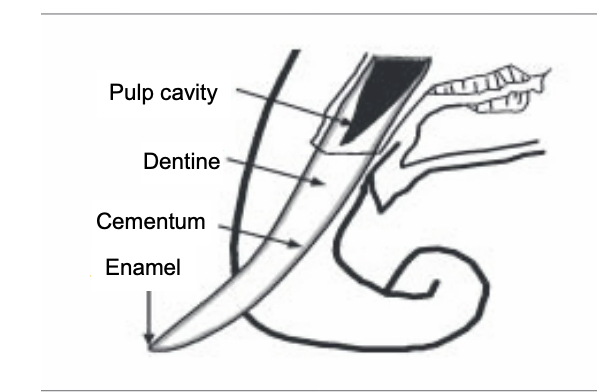Conservation and Sustainable Use of Wildlife
What is Ivory?
Elephant tusks are pairs of elongated upper jaw incisors of the African elephant (African Savanna Elephant (Loxodonta africana) and African Forest Elephant (Loxodonta cyclotis)) or the Asian elephant (Elephas maximus) and grow throughout life. Their chemical composition is the same as teeth of other mammal species. Elephant tusks also have the same main physical structures as teeth: pulp cavity, dentine, cementum and enamel. The pulp cavity is filled with nerves, blood vessels and odontoblasts (the cells that produce dentine). Dentine is the major component of ivory, the material used to make seals and netsuke (miniature decorative sculpture). A cementum layer covers the external surface of the dentine but is worn down toward the tip of the tusk. Enamel is found at the tip of the tusk but wears down with age until it is completely lost.

CITES restricts international trade, not only in ivory but also in live elephants, full-body taxidermy mounts, and body parts such as skin and tusks. The Asian elephant and the African elephant were listed in 1975 and 1990, respectively, in Appendix Ⅰ of CITES, which prohibits international trade for commercial purposes. Since then, in 1997, the populations of Botswana, Namibia and Zimbabwe, and in 2000, the populations of South Africa, were moved to Appendix Ⅱ, which enables commercial trade. There are annotations, nevertheless, that set strict conditions to both importing and exporting countries.
In Japan, import/export of whole tusks (including raw ivory), cut pieces and ivory products under CITES are regulated under the Foreign Exchange and Foreign Trade Act. (See Ministry of Economy, Trade and Industry [METI] website.) Domestic trade that follows importation is controlled through a set of restrictions under the Act on Conservation of Endangered Species of Wild Fauna and Flora (ACES).

